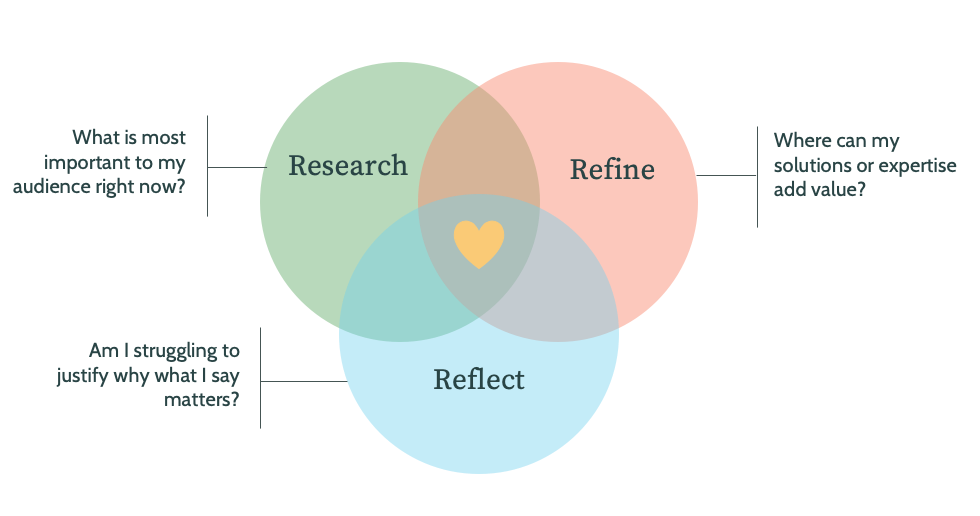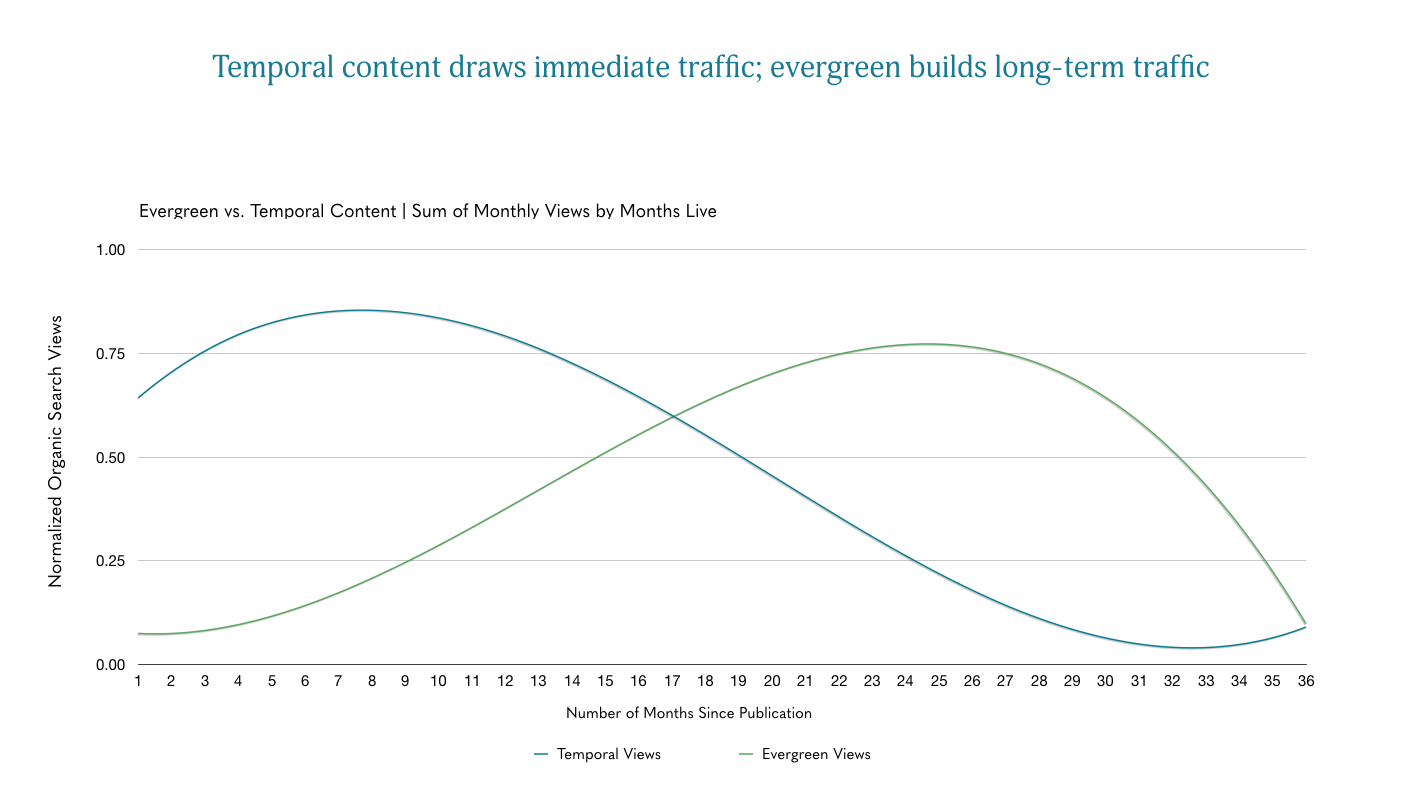Content Creation
How to Create Content That’s Relevant, not Opportunistic: The 3 Rs Marketers Need to Know
By Casey Nobile on April 13, 2020
In content marketing, the key to brand resilience is relevance. This means being able to connect with your audience in meaningful and appropriate ways on a continuous basis. But even brand leaders who spend a lot of resources researching target audience preferences can still fall short when it comes to creating content that's highly relevant. What causes these missteps?
For starters, they may not be keeping their eyes on the road ahead. Consider this: A sales funnel is like a highway that leads to customer solutions. Stemming from it are roads and byways in the form of content. The fundamental role of content marketing is to build a network of routes into the communities and neighborhoods where target audiences live. Delivering exciting, relevant content that meets audiences where they are can convince them to take a meaningful journey with your brand.
It seems simple in theory, but can be tricky to execute. A well-thought-out plan makes creating purposeful journeys a little easier.
Make Routes, not Dead Ends
As a marketing leader, you should never assume that simply building a road to your audience through content or a campaign will automatically attract customers. Audiences are sophisticated and value-driven, and they're inundated with content choices every day. The old adage, "If you build it, they will come," just doesn't apply to content marketing.
Instead, you'll need to take the meticulous approach of a city planner and consider these basic rules as you create content:
- Make your road easy to find: Develop a detailed map of the area and the people you want to serve.
- Avoid obstacles: Don't build roads that involve torturous detours or, worse, lead to nowhere. Content should always address your audience's pain points and reflect your business objectives.
- Don't build where you're not welcome: Content has to contribute value and fit organically within the cultural context of your target audience. Otherwise, you risk appearing opportunistic and losing their trust.
In addition, focusing on three Rs—research, refine, and reflect—can help your brand create content that's relevant and effective.

Source: Skyword
Research: Map What's Important to Your Audience Right Now
Creating content that resonates starts with researching the topics that are top-of-mind with your audience. Creating personas makes you familiar with your audience's ideologies, influences, tastes, and values. Topical research takes this process further, allowing you to identify their current needs, desires, and behaviors. To keep up with your audience's ever-changing needs, you'll need to regard research as a constant and essential component of your content strategy.
The massive socioeconomic impact of COVID-19 has hyper-magnified the importance of research. As consumer and business priorities shift at lightning speed, it's crucial for you to keep pace with how these changes affect the needs and interests of your audience. What you think your audience cares about right now may not be accurate. Through research, you can pinpoint their current needs and expectations and better align your content to them.
How to Conduct Audience Research
Using data to understand your audience is critical, but it's not always feasible to invest in consumer surveys or focus groups—especially in times like these. Consider other available resources for gathering valuable customer data, including:
- calling engaged customers
- collecting information from sales, as they're already on the front lines
- creating a virtual customer advisory board
- putting out digital polls
Layering these sorts of activities with search and social listening data analysis is a fast way to gain insight into what's on your audience's mind and uncover content opportunities that your competitors may be missing.
Online mentions and search activity will identify trending topics among target audiences across different channels. But drilling down into conversations on social will provide you with unfiltered snapshots of sentiments surrounding those topics. Search and social data have the added benefit of being scalable, making it easy to home in on specific geographies or demographics to better serve the needs of diverse audience segments.
The key here isn't only looking for macro topics, but also uncovering the concerns and questions that are nested within those topics. For example, Skyword's search and social analysis of coronavirus-related content over the first half of March reveals that conversations within the B2B tech sector spiked around communicating with customers while working from home. A deeper dive into that topic area revealed a huge surge in questions about how to reach customers through webinars and virtual sessions. If you're a software brand like Livestorm or GoToWebinar, you'll want to make note of conversations like these, as they signal a need for content.
Critical questions to ask as you conduct audience research include:
- Which important topics are my target audience engaging with?
- What's trending with my audience right now?
- What's the audience sentiment surrounding those topics?
- What are the specific pain points my audience is trying to solve?
Refine: Focus on Making Your Content Journey More Meaningful
After identifying these topics and audience needs, select the ones your brand should target. You'll want to whittle down the list to the ones that best align with your value proposition and business objectives. Additionally, consider which of these topics you're uniquely positioned to comment on.
If you create content that falls too far outside of your wheelhouse, you risk coming off as disingenuous and audiences may be wary about connecting with your brand. It can be tempting to chase a trending topic, but you shouldn't join the conversation unless you have a right to play. Ask yourself: Can our content help a customer in a meaningful way? If the answer is no, stay away from the topic.
How to Refine Your Topics
As you identify relevant topics, you'll need to prioritize them. Start by referring back to your content strategy. From there, you can refine your topics by taking the following steps:
- Look at the specific content themes and categories that your brand has staked a claim in.
- Pinpoint intersections between those categories and the topics your research has uncovered.
- Evaluate your SEO strategy to find connections between trending topics and the search terms that you've targeted for long-term content creation.
- Assess the scope of the conversation's impact.
You'll want to choose topics that are big enough to interest a broad swath of your audience, but you'll need to approach them from an angle that demonstrates your brand's unique personality, values, and offerings. For example, if you're a software brand that specializes in security, you could contribute to the conversation on webinars and virtual sessions with tips on how IT can ensure that virtual events are secure for their company and customers.
Tips for Timely Content Angles
If you're targeting timely subjects like COVID-19, you'll want to use a mix of temporal and evergreen content. Temporal content may be hyper-relevant—like an article on how small businesses can apply for loans through the CARES Act—but is time sensitive and will lose relevance quickly. Evergreen content centered on business resilience planning, for example, is still top-of-mind for organizations coping with the COVID-19 crisis, but will continue to hold value long into the foreseeable future. It's timely, but not time-sensitive.
The results you can expect from one type of content is inverse to the other. Temporal content generally serves to boost immediate traffic, while evergreen content continues to build in search value over time.

Source: Skyword
*Data is based on the organic search performance of a randomized set of 312 evergreen blog posts and 312 temporal blog posts published via Skyword360 over three years—from January 1, 2017, to February 29, 2020.
Critical questions to ask as you refine your topics include:
- Can we contribute value to this conversation?
- Do we have a solution for this existing or emerging problem?
- Do we have the expertise to weigh in?
- Do we have a unique perspective to offer?
Reflect: Ensure You Have the Right to Play
Have you ever been in the middle of crafting a piece of content and found yourself questioning whether the topic made sense, or whether your approach was coming off as inauthentic? It happens to the best of us. Reflection is a critical step that often gets overlooked during the rush to get content out the door.
To avoid a brand misstep, take a moment to reflect on how you're positioned to help customers on this topic. Why is what you have to say important? Why should customers listen to you versus someone else? Before you dive into the creation process, use this practice to help strengthen the "why" behind pieces of content. It can also spark ideas that help make your content stand out from the crowd.
How to Reflect on Your Content Ideas
Reevaluate the strength of the links you identified between each topic and your brand. If it's going to be a struggle or stretch to make the content credible, or if you find yourself shoehorning your message into the content, either back away from that particular idea altogether or pursue another path to the topic.
Thematically, this will keep your content aligned with sustainable areas of focus for your brand that you can continue to build upon with fresh content. Otherwise, you risk tackling a series of one-off hot topics that are only tenuously connected to your brand, which won't move the needle on your marketing goals.
Critical questions to ask when reflecting on content ideas include:
- Will our approach feel authentic and ring true to our audience?
- Can we tie this content back to our brand values?
- Is our brand's solution truly relevant to this conversation?
- Are we forcing our brand message into this content or is this an organic fit?
Though there are no quick hacks for creating relevant content, this framework makes a targeted approach achievable for any brand. But as you move through each step, resist the temptation to silence out-of-the-box ideas. The best part about honing your focus is that it frees your team up to spend more energy on bringing ideas to life in creative, inspiring, and entertaining ways.
For more insight into coronavirus-related search and social patterns, check out Skyword's webinar: Understanding Your Audience in the Age of Coronavirus.
For more stories like this, subscribe to the Content Standard newsletter.
Featured photo attribution: Marc-Olivier Jodoin on Unsplash.
